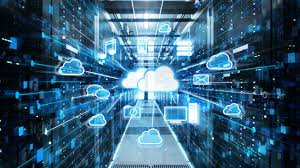
Step 1: Basic Concepts
- What is a computer?
- What are the basic components of a computer system?
- Define hardware and software.
- Explain the difference between RAM and ROM.
- What is a CPU and what does it do?
Step 2: Operating Systems
- What is an operating system (OS)?
- Name three popular operating systems for personal computers.
- Explain the difference between Windows, macOS, and Linux.
- What is a file system?
- How does multitasking work in an operating system?
Step 3: Computer Networks
- What is a computer network?
- Define LAN, WAN, and MAN.
- What is the difference between a hub and a switch?
- Explain the purpose of a router in a network.
- What is an IP address?
Step 4: Internet Basics
- What is the internet?
- Explain the difference between the internet and the World Wide Web.
- What is a web browser?
- Describe the function of a search engine.
- What is an email and how does it work?
Step 5: Data Storage
- Define data storage.
- What are the different types of data storage devices?
- Explain the difference between HDD and SSD.
- What is cloud storage?
- How does data compression work?
Step 6: Computer Security
- What is computer security?
- Define malware and give examples.
- Explain the importance of antivirus software.
- What is phishing?
- How can you create strong passwords?
Step 7: Programming Concepts
- What is programming?
- Explain the difference between compiled and interpreted languages.
- Name three popular programming languages.
- What is an algorithm?
- Define variables and data types.
Step 8: Computer Hardware
- What is a motherboard?
- Explain the purpose of a graphics card.
- What is a peripheral device?
- Describe the function of a power supply unit (PSU).
- What are input and output devices?
Step 9: Software Applications
- What is application software?
- Name three types of productivity software.
- Define multimedia software and give examples.
- What is gaming software?
- Explain the purpose of system utility software.
Step 10: Computer Maintenance
- What is computer maintenance?
- Describe the process of cleaning computer hardware.
- How do you defragment a hard drive?
- What is system optimization?
- Explain the importance of regular software updates.
Step 11: Computer Troubleshooting
- What is troubleshooting?
- How do you troubleshoot a computer that won’t turn on?
- What are common reasons for a slow computer?
- How do you troubleshoot network connectivity issues?
- What is the blue screen of death (BSOD) and how do you fix it?
Step 12: Graphics and Multimedia
- What is computer graphics?
- Explain the difference between raster and vector graphics.
- What is multimedia?
- Name three multimedia file formats.
- What is 3D modeling and animation?
Step 13: Mobile Computing
- What is mobile computing?
- Explain the difference between a smartphone and a tablet.
- What is an operating system for mobile devices?
- What are mobile apps?
- How do you protect your mobile device from security threats?
Step 14: Artificial Intelligence and Machine Learning
- What is artificial intelligence (AI)?
- Explain the concept of machine learning.
- What are neural networks?
- Give examples of AI applications in everyday life.
- How is AI changing the future of computing?
Step 15: Quantum Computing
- What is quantum computing?
- Explain the concept of quantum bits (qubits).
- How is quantum computing different from classical computing?
- What are the potential applications of quantum computing?
- What are the challenges of developing practical quantum computers?
Step 16: Internet of Things (IoT)
- What is the Internet of Things (IoT)?
- Give examples of IoT devices.
- How do IoT devices communicate with each other?
- What are the benefits of IoT?
- What are the security concerns related to IoT?
Step 17: Data Science and Big Data
- What is data science?
- Explain the concept of big data.
- What are the characteristics of big data?
- How is big data analyzed?
- What are the applications of data science in various industries?
Step 18: Robotics
- What is robotics?
- Explain the difference between industrial and service robots.
- What are the components of a robot?
- How are robots programmed?
- What are the ethical considerations related to robotics?
Step 19: Virtual Reality and Augmented Reality
- What is virtual reality (VR)?
- Explain the difference between VR and augmented reality (AR).
- What are the components of a VR system?
- What are the applications of VR and AR?
- How do you create content for VR and AR?
Step 20: Future Technologies
- What are some emerging technologies in computing?
- How do you stay updated with the latest developments in technology?
- What are the potential future trends in computing?
- How will technology shape the future of society?
- What role do you see yourself playing in the future of computing?





nice